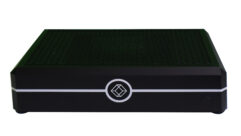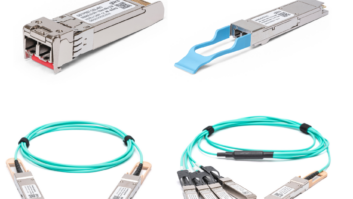Increasingly Strict Environmental Regs Affect AV Fiber Applications
Apr 25, 2007 8:00 AM
Applications of fiber optics in video-intensive settings, a major source of potential growth for AV integrators working with clients in many industries, also bring integrators in touch with a growing range of environmental protection issues and initiatives.
“Globally, the high-tech industry has experienced a significant shift in the approach to potentially hazardous materials commonly used in the electronics and high-tech manufacturing,” Timbercon notes on its website. In these international terms, probably the single biggest impetus to electronic industries in general to pay more attention to environmental issues was the European Economic Community’s promulgation of the Reduction of Hazardous Substances regulations, commonly known as ROHS.
Fiber advocates have long made the case that their products were more environmentally acceptable than some alternatives—for example, by citing the lower energy consumption of fiber networks and the fact that fiber transmission doesn’t result in electromagnetic emissions.
The new regulations went into effect in mid-2006, and not only companies active in the European market have been affected. Indeed, some manufacturers, integrators, and others believe the EU’s ROHS effort is just a prelude to a heightened national regulatory effort in the United States, by the states as well as the federal government.
This concern has focused more attention not only on the basic materials involved in a fiber network, but also on many of the devices and components associated with the network. The European activities have also put AV integrators on notice that they may be liable if they specify or install products that aren’t ROHS compliant. As a result, integrators are looking to their suppliers to verify ROHS compliance, and vendors must lean on the suppliers of their raw materials and components to make the same certification.
The areas of greatest concern to AV specialists include cladding on cables, solder in circuit boards, and disposal of both installation debris and waste and outdated products.
Substances subject to bans or severe restrictions include lead, mercury, cadmium, polybrominated biphenyls, and polybrominated biphenyl ethers. The last two substances have chiefly been used in electronics as flame retardants mixed into plastics used to wrap wires and cables.
These wires are often exposed to high temperatures and must be able to perform without melting, smoldering, or burning. Manufacturers of fiber-optic cables for video transmission and other critical applications also need cladding that’s highly flexible, particularly as its ability to bend and fit into right spots is high on the list of fiber’s selling points. Manufacturers have been pressured to remove undesirable chemicals from cable jackets without sacrificing these key performance attributes.
Lead has possibly posed the greatest challenge to electronic component makers because of its presence in solder, which is virtually ubiquitous on circuit boards. Switching to lead-free solder has been a daunting job for electronics manufacturers, particularly considering that the performance of solders containing lead has been extensively studied and understood over many years, while the long-term reliability of lead-free solder is less certain. This challenge, though, has largely been overcome by early 2007.
Working with fiber means AV integrators must also master techniques for handling fine glass strands and particles that may be produced during installation, termination, and other processes, as well as disposing of unwanted cable fragments and other waste. Some states—notably California—have already adopted disposal regulations significantly more stringent than federal rules, and AV integrators need to become thoroughly conversant with the rules governing their own business environment.










